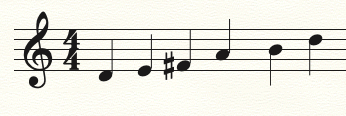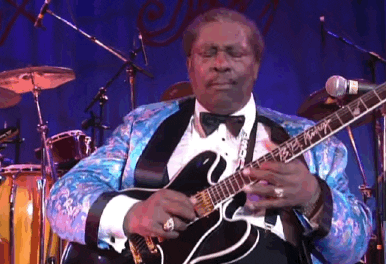2.4 Other Scales: Chromatic, Whole-Tone, and Pentatonic
6 min read•january 13, 2023
Mickey Hansen
AP Music Theory 🎶
72 resourcesSee Units
In addition to the major and minor scales, there are a couple of other important scales that appear in various types of music. We need to be able to identify these scales by ear 👂 and by sight 👀.
Chromatic Scales
The chromatic scale is a musical scale with 12 pitches, each a semitone (or a half step) apart from its neighbors. The chromatic scale can be represented using the following notation:
C C# D D# E F F# G G# A A# B
The chromatic scale can be used to play any piece of music in any key, by starting on the desired tonic (root) pitch and using the appropriate pitches from the chromatic scale. Usually, when you notate an ascending chromatic scale (the chromatic scale going up), you will use sharps as the accidentals, and when you notate a descending chromatic scale (the chromatic scale going down) you use flats.
Here is what an ascending chromatic scale looks like:

And the descending chromatic scale:

The chromatic scale is often used as a reference scale in music theory, as it includes all 12 pitches used in Western music. It is also used as a way to play or sing a melody using every pitch available within an octave. In this way, the chromatic scale can be used to create expressive, chromatically inflected melodies that can add interest and variety to a musical composition.
Using the chromatic scale often creates tension in a musical passage, and oftentimes, the chromatic scale will resolve when you reach the tonic or the starting note of some melody. This waltz by Chopin is a good example of how the chromatic scale can be used in music.
Whole Tone-Scale
The next unique scale is the whole-tone scale. The whole tone scale is a musical scale in which each note is separated from its neighbors by a whole step (a distance of two semitones). This scale consists of six notes, and is typically notated using the following scale degree notation: 1, 2, 3, 4, 5, 6. Here's an example of the C whole tone scale:
G A B C# D# E# G
Here is the whole-tone scale in treble clef:

And in the bass clef:

You can identify the whole-tone scale by eye 👀 because it only has 6 different scale degrees, versus 7 in a major or minor scale. Remember that the last note in the examples are the resolution of the scale (the tonic), so it repeats the original pitch of the scale. If we include the tonic again, all major and minor scales have 8 notes total, and the whole-note scale would have 7.
The whole tone scale is symmetrical, meaning that the same interval patterns occur between each note and the ones that follow it. It is often used in a compositional context to create a sense of instability or dissonance, as it lacks the tonal center or "home base" that is present in more traditional diatonic scales. It can also be used in improvisation as a way to explore new tonal possibilities and create unique melodies.
One well-known example of the whole tone scale being used in music is in the opening theme of the second movement of Claude Debussy's "Suite Bergamasque," which is titled "Clair de Lune." The theme is written in the key of C# and uses the notes of the C# whole tone scale:
C# D# F G A B
Another example of the whole tone scale being used in music is in the opening theme of the first movement of Alexander Scriabin's "Piano Sonata No. 2." This theme is written in the key of B and uses the notes of the B whole tone scale:
B C# D# F# G# A#
Other notable works that make use of the whole tone scale include Igor Stravinsky's "The Rite of Spring," Béla Bartók's "Music for Strings, Percussion, and Celesta," and Paul Hindemith's "Mathis der Maler Symphony."
Pentatonic Scales
Pentatonic scales are musical scales that consist of five notes per octave. They are used in a variety of musical styles around the world. Quite a bit of traditional Asian music is pentatonic, and as such, the pentatonic scale is often associated with Asian music.
However, pentatonic scales have been used in music for thousands of years and can be found in a wide range of musical traditions around the world. They have been used in various forms in many different cultures, including African, Asian, and Native American music.
One of the earliest known examples of pentatonic scales being used in music is in ancient Greek music, where they were used in melodies and modes. The pentatonic scale also played a significant role in the development of Western classical music, and can be found in the works of composers such as Wolfgang Amadeus Mozart and Ludwig van Beethoven.
In the 20th century, pentatonic scales became a key element in the development of blues, jazz, and rock music. They are widely used in these genres, as well as in many other contemporary styles of music.
There are two types of pentatonic scales: the minor pentatonic scale and the major pentatonic scale.
The minor pentatonic scale is made up of the 1st, 3rd, 4th, 5th, and 7th degrees of a natural minor scale. For example, the A minor pentatonic scale consists of the following notes:
A C D E G
Below is a written example of a minor pentatonic scale, starting on A.

The major pentatonic scale is made up of the 1st, 2nd, 3rd, 5th, and 6th degrees of a major scale. For example, the C major pentatonic scale consists of the following notes:
You can view the major pentatonic scale starting on D:

Pentatonic scales are widely used in many styles of music, including rock, blues, folk, and pop. They are often used in guitar solos and melodies, and are a popular choice for improvisation due to their simplicity and versatility.
Here are a few examples of pentatonic scales being used in popular music:
- "Twinkle, Twinkle, Little Star" is a well-known children's song that uses the C major pentatonic scale.
- "Sweet Child o' Mine," a song by Guns N' Roses, makes use of the E minor pentatonic scale in its guitar solo.
- "Blackbird," a song by The Beatles, uses the A minor pentatonic scale in its guitar solo.
- "Johnny B. Goode," a song by Chuck Berry, uses the G major pentatonic scale in its guitar solo.
- "Summertime," a jazz standard composed by George Gershwin, uses the Bb major pentatonic scale in its melody.
These are just a few examples, but pentatonic scales are used in many other popular songs as well. They are a versatile and widely-used element in music and can be found in a variety of styles and genres.
➡️ For the AP® Test, you will not be tested on the difference between a major and minor pentatonic scale, you just need to know that a scale with five notes WILL be a pentatonic scale!
Fun fact! You can take the minor pentatonic scale, add one note to it (between the 3rd and 4th notes of the above MINOR example, add an Eb/D#) and you suddenly have the blues scale.

🦜 Polly wants a progress tracker: How many notes does the chromatic scale have? How about the whole-tone scale? And finally the pentatonic scale?
Browse Study Guides By Unit
🎵Unit 1 – Music Fundamentals I (Pitch, Major Scales and Key Signatures, Rhythm, Meter, and Expressive Elements)
🎶Unit 2 – Music Fundamentals II (Minor Scales and Key Signatures, Melody, Timbre, and Texture)
🎻Unit 3 – Music Fundamentals III (Triads and Seventh Chords)
🎹Unit 4 – Harmony and Voice Leading I (Chord Function, Cadence, and Phrase)
🎸Unit 5: Harmony and Voice Leading II: Chord Progressions and Predominant Function
🎤Unit 7 – Harmony and Voice Leading IV (Secondary Function)
📝Exam Skills
📆Big Reviews: Finals & Exam Prep

Fiveable
Resources
© 2023 Fiveable Inc. All rights reserved.